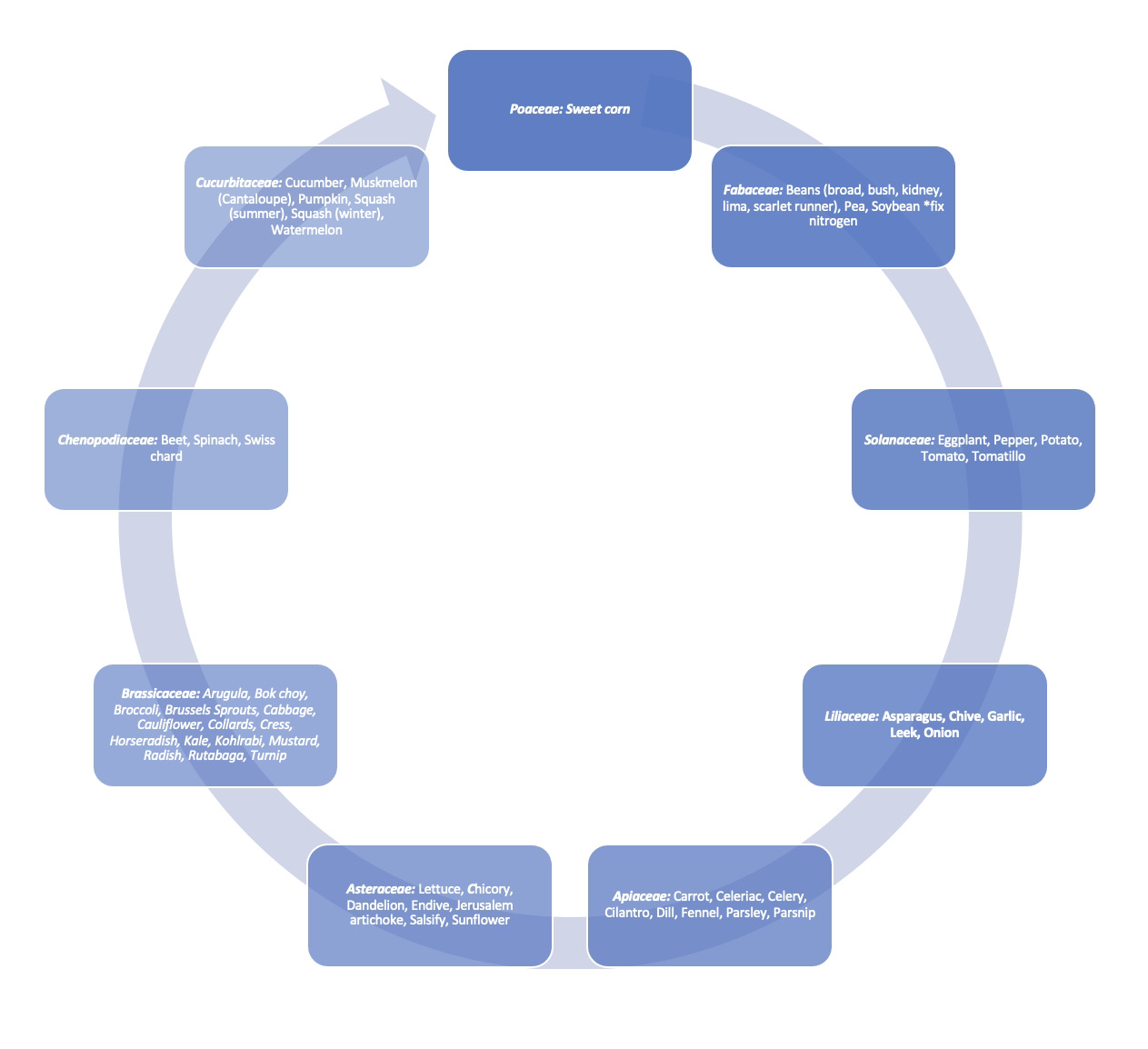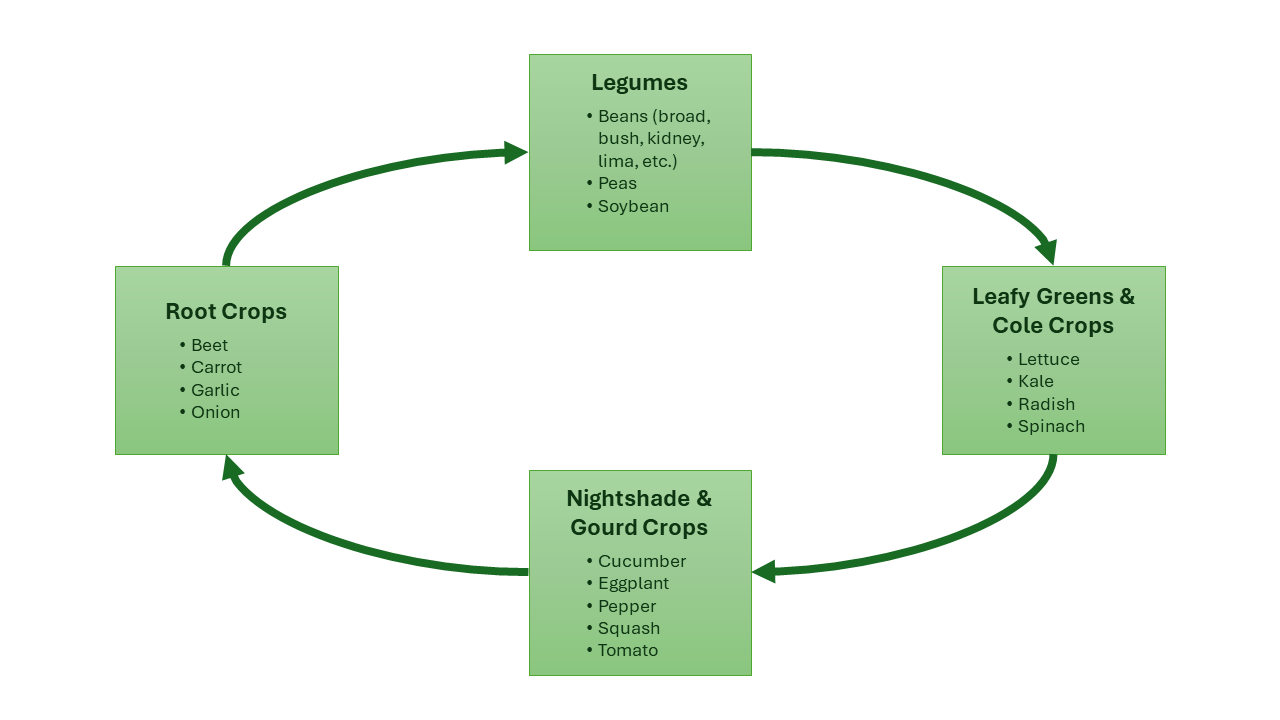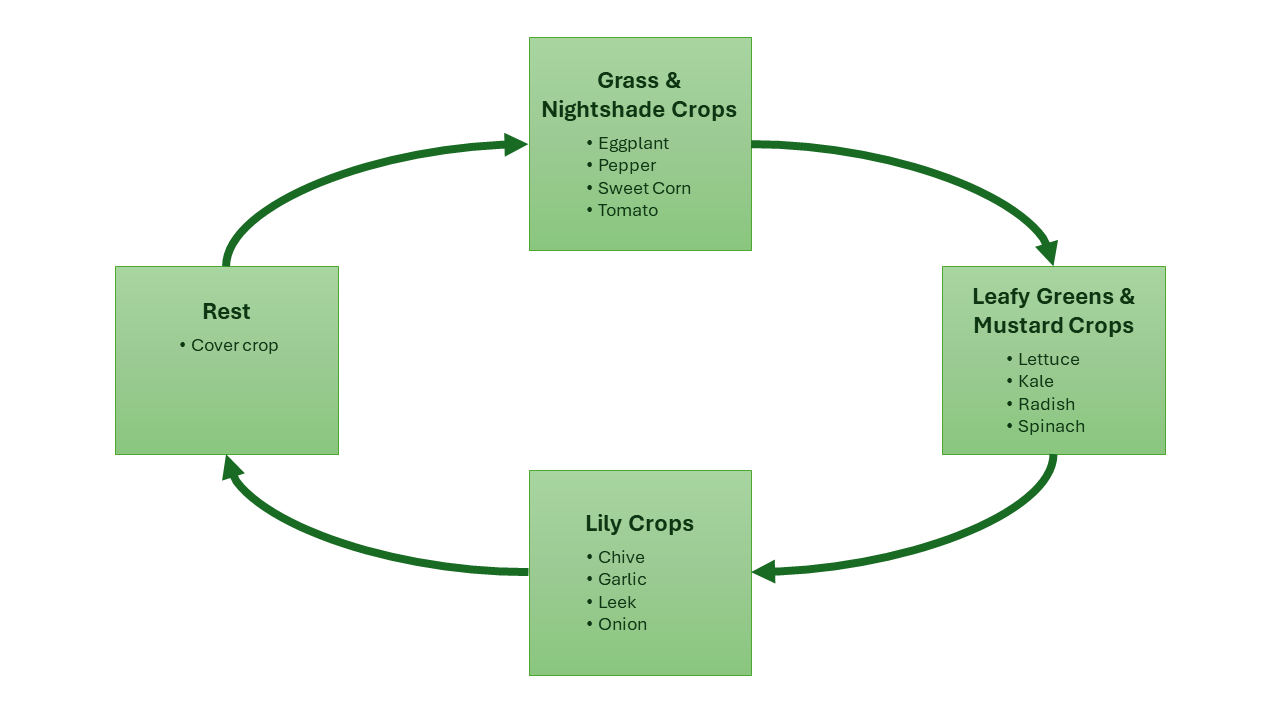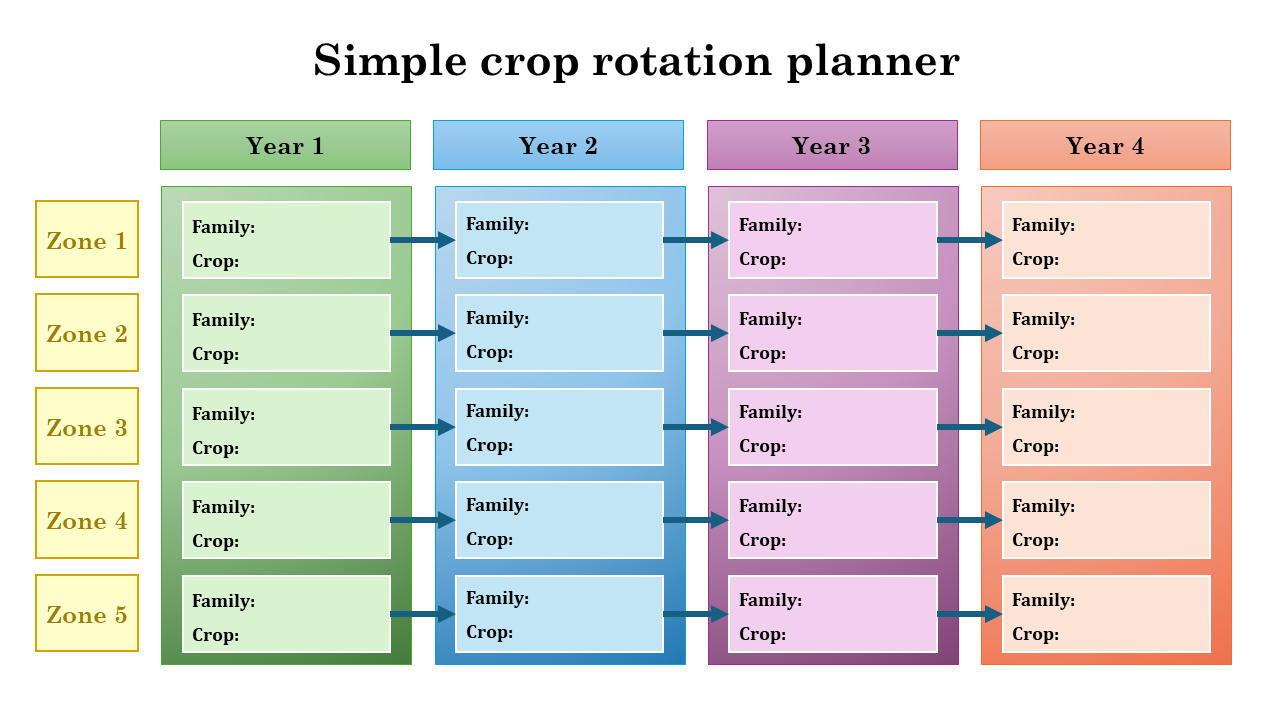
Rotating your vegetables
Reduces vegetable disease and insect problems
Crop rotation
While it may be tempting to grow the same vegetables in the same locations every year, this can actually reduce the amount of nutrients available in the soil over time, leading to poor plant growth. Additionally, this practice can also cause the buildup of soil-bourne pests and diseases that can harm your plants in the following seasons. Thankfully, there's a simple solution. By carefully choosing your plants and rotating where they are planted you can help your vegetable garden to flourish year after year.
This method is called crop rotation, which is the practice of rotating where annual crops are planted in the garden every year. Ideally, this means not planting crops from the same family in the same spot for at least 3 years. See the chart in the next section for details about plant families.
Plant families
The goal of rotating the vegetable crops in your garden is to avoid planting vegetables from the same plant family in the same spot for at least 3 (preferably 4) years. Some plant families like Brassicaceae and Solanaceae contain many popular vegetables species that are frequently planted by gardeners. The table below groups some popular vegetables together by their plant family and can be used to help plan your rotations.
Table of plant families
| Plant Family | Vegetable Crops |
| Parsley family (Apiaceae) |
Carrot, celeriac, celery, cilantro, dill, fennel, parsley, parsnip |
| Sunflower family (Asteraceae) |
Lettuce, chicory, dandelion, endive, jerusalem artichoke, salsify, sunfower |
| Amaranth family (Amaranthaceae) |
Beet, spinach, swiss chard |
| Mustard family (Brassicaceae) |
Arugula, bok choy, broccoli, brussel sprouts, cabbage, cauliflower, collards, cress, horseradish, kale, kohlrabi, mustard, radish, rutabaga, turnip |
| Gourd family (Cucurbitaceae) |
Cucumber, muskmelon (canteloupe), squash (winter or summer), watermelon |
| Pea family (Fabaceae) |
Beans (broad, bush, kidney, lima, scarlet runner), peas, soybean |
| Liliaceae (Lily family) |
Chive, garlic, leek, onion |
| Poaceae (Grass family) |
Sweet corn |
| Solanaceae (Nightshade family) |
Eggplant, pepper, potato, tomato, tomatillo |
For more information about how to care for different vegetable crops click here
Light and Heavy Feeders
Another thing that needs to be considered in planning a rotation is how much nutrients, specifically nitrogen, a plant uses. Luckily, most crops have already been categorized as heavy feeders, and light feeders with heavy feeders using the most nitrogen and light feeders using the least. However, there is another category: nitrogen-fixers. These are plants that add nitrogen back into the soil. The ideal crop rotation would follow heavy-feeding crops like corn with a nitrogen-fixing crop like peas or beans to replenish nitrogen. See the chart below for details about plants categorized by their nitrogen consumption.
Table of plants by nutrient requirement
| Heavy Feeders | Nitrogen Fixers |
|
Broccoli Brussel sprouts Cabbage Cauliflower Corn Cucumber Eggplant Peppers Potatoes Squash Tomatoes |
Broad beans Bush beans Kidney beans Lima beans Scarlet runner beans Peas Soybean |
How to plan your vegetable crop rotation
- Use a garden journal to keep track of where you plant your vegetables, so you remember from year to year.Taking a photo at the end of the season is another great way to keep track of what was planted in your garden beds.
- Divide your vegetable garden into manageable sections or beds.
- Place vegetable crops from the same family in each section and every year shift where you grow crops as shown in the green diagram (descriptor of where it is).
- Make sure to have a nitrogen-fixing crop (i.e. peas or another legume) after heavy feeders in your rotation. If space is limited and your favourite crops are heavy feeders, compost can be added to soil so that you can grow them one after another (i.e. planting squash after tomato). For more information on using compost in your garden click here.
One thing to keep in mind is that you don’t have to limit yourself to only one crop per bed or section. You can plant short season vegetables in between long season vegetables, plant shallow-rooted and deep-rooted crops together, or take advantage of shade produced by taller crops like tomatoes to plant small vegetables that are more tolerant of shade like lettuce.
Below are some examples of vegetable crop rotations that can be implemented in your own garden or used as inspiration as well as a crop rotation planner.



Sources
Agriculture Extended Learning – Garden Box. (n.d.) Crop rotation and companion planting [Fact sheet]. Dalhousie University Faculty of Agriculture. https://cdn.dal.ca/content/dam/dalhousie/pdf/agriculture/ExtendedLearning/gardenbox/Crop%20Rotation%20and%20Companion%20Planting_Garden%20Box_Online.pdf
Steil, A. (2023, May). Crop rotation in the Vegetable Garden. Iowa State University. https://yardandgarden.extension.iastate.edu/how-to/crop-rotation-vegetable-garden
Williams, S., & Skinner, H. (2011). Vegetables. In Gardening, naturally: a chemical-free handbook for the Prairies (pp. 85–136). Coteau Books.

